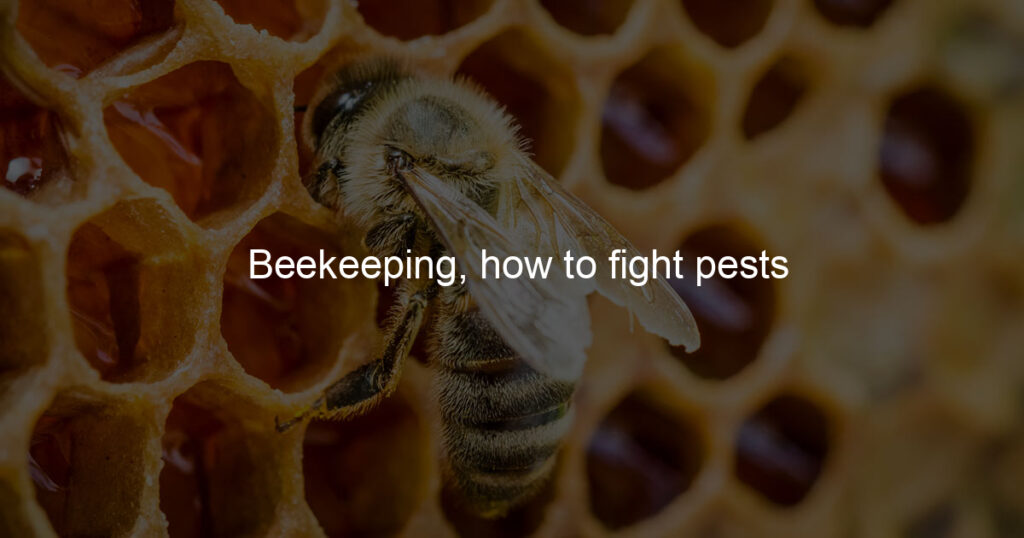Beekeeping is a rewarding process that allows us to bring life into our lives and benefit from the natural world in ways we may have never imagined. Not only does beekeeping help to support our environment’s delicate balance of insects and plants, but it also provides the keeper with sweet honey rewards! But sometimes, pests entice their way onto your beehive – mites, waxworms, and beetles can disrupt the hive’s productivity if not dealt with quickly.
In this blog post, we’ll explore how you can fight common pests using easy-to-find methods that are both safe for your bees and effective in preserving your precious hive population.
How do bees protect themselves from predators?
Honeybees are incredibly effective at protecting themselves from predators. Bees use a variety of tactics to ward off potential threats. Vibrations and smell are used to communicate danger within the hive, while chemicals and coloring make it difficult for intruders to bother them.
The most faithful defense of bees is the construction of their impressive hives. Thick walls with multiple entrances help prevent predators from entering while adequate airflow keeps the hive cool in warm temperatures. Their hives also contain bee brood, special clusters that provide an even more impenetrable barrier against intruders.
In this way, honeybee colonies remain safe from harm, allowing them to do the important work of pollinating our planet’s flora and fauna.
What is the natural enemy of bees?
Bees are some of the most important pollinators in nature, but they have many enemies. Wasps and other predatory flying insects prey on bees for food.
Reptiles such as lizards and snakes also eat bees if they can get them. Mammals like bears, skunks, and monkeys may raid hives for honey or larvae. Perhaps the most nefarious threat to bees is human development and pollution, which destroy their natural habitats and reduce the resources available to them. Without these resources, bee populations are in serious decline all over the world.
What is a bee’s defense mechanism?
Bees are one of nature’s most productive yet delicate creatures and their defense mechanisms are essential for their survival. One of the main defense mechanisms that bees possess is a stinger, which is located in the abdomen and delivers venom specially designed to ward off potential predators.
When attacked, bees can release alarm pheromones from a gland on their abdomens, alerting other bees of the presence of danger. As surely as it’s true that ducks have webbed feet for paddling and bears have claws for digging, it’s just as true that bees are equipped with an array of methods to protect themselves in the event of a confrontation.
What is a bee’s worst enemy?
A bee’s worst enemy is mankind. Through the destruction of habitats, intensive farming practices, and pesticides, humans have had a profound impact on bees and their ability to thrive.
Bees are currently facing more challenges than ever before as they try to pollinate and survive in an increasingly inhospitable world. Other natural predators like bears, skunks, birds, lizards, and other insects may occasionally take down a bee or two, but as a whole, humanity provides the leading cause of the decline in bee populations worldwide.
What is killing bees the most?
The question of what is killing bees the most has been one that scientists, beekeepers, and other interested parties have been trying to answer for a long time.
Recent evidence suggests that pesticides are taking a heavy toll on bee populations, as well as an increase in diseases caused by viruses and parasites. Habitat loss from land clearing and urban sprawl, extreme weather fluctuations due to our changing climate, and even a lack of genetic diversity among bee colonies can also contribute to declining bee numbers.
For any effective solutions to be developed, stakeholders need to recognize all the threats bees face and work together toward creating more sustainable environments conducive to honeybee health.
The Final Word: Beekeeping, how to fight pests?
In conclusion, beekeeping can be a rewarding experience with the right tools and knowledge. Proper nutrition, temperature management, and pest control are key components of successful beekeeping.
Utilizing techniques like varroa mite treatments, hive inspections, using essential oils for pest control, and segregating infected colonies can help ward off any pesky pests. Taking precautions such as wearing protective clothing to prevent stings is imperative to protect the beekeeper as well.
Beekeepers must also consider the health of their colony and ensure they are providing adequate nutrition year-round and enough environmental stimulation to maintain healthier, happier colonies. With proper care and precaution, those wishing to engage in beekeeping can enjoy a gratifying and fulfilling experience that has many benefits for our environment.








